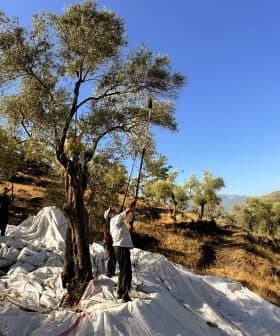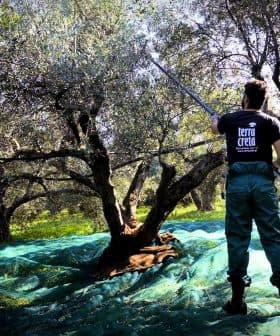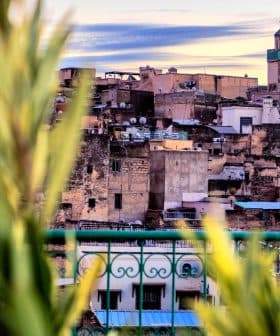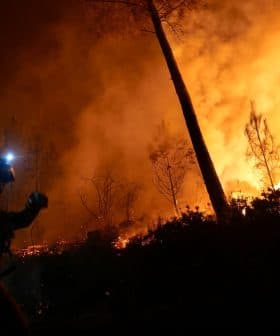As California Grapples with Water Shortage, Olive Oil Producers See an 'Up Year'
The New York Times article highlighted the excessive amounts of water needed to produce various crops in California, leading to concerns about the impact of the ongoing drought on the olive oil industry. Despite the challenges posed by the drought, olive trees are resilient and adaptable, with research indicating that water-stressed olives can actually produce higher quality oils.
Back in May, in an eye-opening story, The New York Times offered a reality check regarding the West Coast’s severe water shortage. In “Your Contribution to the California Drought,” reporters Larry Buchanan, Josh Keller, and Haeyoun Park laid down the facts: it takes just over 15 gallons of water to produce 16 almonds; more than 15 gallons for a mere 2 ounces of rice; a whopping 24 gallons for a single bunch of grapes; 9 gallons for a small bowl of processed tomatoes; and 1.4 gallons for just two olives.
Given the austerity measures currently in place, with additional steps toward water conservation sure to follow, what will become of California’s olive trees? For 2015, at least, the olive harvest forecast looks surprisingly upbeat.
Mike Coldani of Coldani Olive Ranch, makers of the award-winning Calivirgin extra virgin olive oil, told Reed Fuji of Recordnet.com recently that this year’s crop is showing promise. “At our ranches, I’m optimistic,” he said, echoing the sentiments of industry colleagues like Jeff Colombini, director of growing operations for Corto Olive. Colombini went a step further: “I would say it’s an above-average crop this year.”
Not so in 2014, when a thin yield created strong demand, particularly for the oils the fruit bears. Much discussion of the drought and its effect on the trees and the future of the left coast’s olive oil industry ensued. It turns out, however, that olive trees are quite a sturdy lot.
The UC Davis’ Drought Management website, dedicated to determining the best strategies to address irrigation efficiency in a water-short environment, says that although “adequate water is critical to maintaining orchard productivity,” olive plants, particularly those grown for oil, are among the most tolerant and flexible when it comes to water.
While table olive producers need to maintain maximum fruit size and fruit yield, the site explains, “the price received for olive oil is not related to fruit size.” Olives for olive oil can be irrigated less than table olives and still produce good oil.

Olive groves at McEvoy Ranch
The site references a study (Berenguer et al, 2006) that essentially indicated that water stressed olives appear to create better, healthier, and tastier olive oils with a higher polyphenol content and an exceptional balance of flavors. By contrast, the more heavily irrigated trees “lowered oil extractability and produced bland oils with significantly less fruitiness and almost no bitterness or pungency.”
Did the drought play a part in 2014’s deficiency? And how does 2015 bring such abundance? Olive Oil Times asked Kimberly Houlding, president and CEO of the American Olive Oil Producers Association to weigh in on the apparent dichotomy. AOOPA represents over 100 producers, all based in California, responsible for over 90 percent of U.S. olive oil production. The olive tree, by nature, she said, is an alternate bearing crop, whose fruit yield quite commonly swings from light to heavy years.
“Growers have tried to control and lessen that by way of managed orchards — their pruning and hedging — to create more of a consistent crop without the huge swings, but there will still be fluctuations. It’s the nature of the tree,” said Houlding. That’s part of the answer. The rest gets chalked up to weather and other factors brought to the growing environment by Mother Nature.
The larger impact for the 2014 growers, Houlding said, was a frost that hit the region in December of 2013. “Olive trees don’t like extended frost periods,” she added. “And that hard frost impacted production for the next year.”
But what about the drought?
Long term, Houlding said, “I would say the industry is looking at what impacts the drought may have on the olive oil produced.” In the U.S., olive trees’ tolerance make for a great alternative crop. “It’s about how best we manage the water that we have. More research is being done as to the quantity of water needed and the timing of irrigation,” among other factors.
“You’re going to have a much more consistent and high-quality crop when water is available in proper quantities. But we’re looking to other countries, like our friends in Australia, to determine what they’ve learned in the management of their crops. That being said, almost 90 percent of the world’s crop goes without developed irrigation of any kind. Olives can be grown in drought conditions. What’s important now is to understand how best to manage it.”









